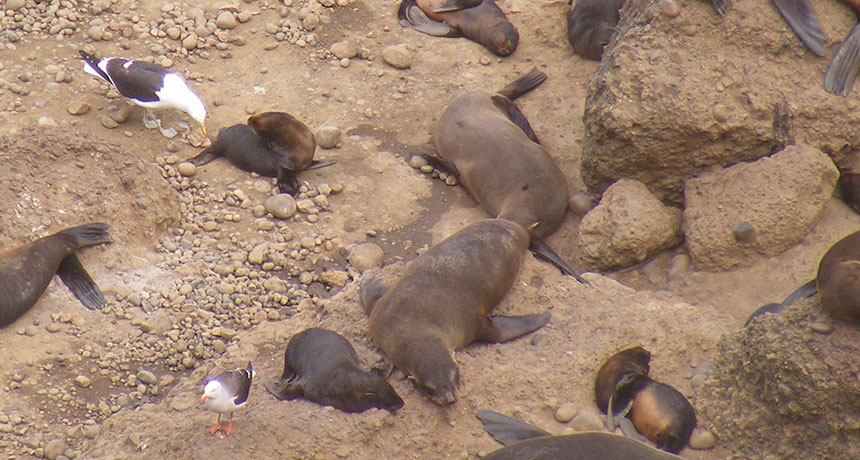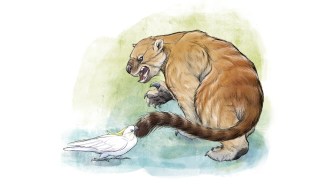One creature’s meal is another’s pain in the butt

Kelp gulls eat the feces of fur seal pups infected with hookworms, sometimes wounding the poor pups in their efforts to obtain a meal, a new study reveals.
M. Seguel et al./Royal Society Open Science 2017
- More than 2 years ago
Anyone who’s had a sandwich stolen out of their hands by a gull at the beach knows firsthand how bold and aggressive these birds can be in their quest for food. But there are gulls that do far worse than steal your sandwich.
The absolute worst might be the kelp gulls that pick at the skin and blubber on the backs of Southern right whales off the coast of Argentina. The wounds caused by the birds are thought to kill many right whale calves. But a close second may be the kelp gulls and dolphin gulls on Guafo Island in Chilean Patagonia. That’s because these gulls are wounding South American fur seal pups as they eat the pups’ feces — straight from the source, a new study reports.
Gulls “are very opportunistic,” says Mauricio Seguel, a veterinary pathologist at the University of Georgia in Athens. “That’s one of the things that is so amazing about these birds. They can adapt so easily to so many different environments.”
The kelp and dolphin gulls on Guafo Island have a varied diet, Sequel says. They eat shellfish plucked out of the ocean at low tide. They crack into sea urchins by dropping them from heights onto the rocks. They’ll steal fish or crabs out of the claws of marine otters. But a big portion of their diet comes from cleaning up after the fur seal colony on the island. The gulls eat placentas left behind after pup births as well as dead pups.
Researchers have been monitoring that fur seal colony since 2003, hoping to learn more about the seals’ biology and how changes in the ocean might be affecting the animals. Then in 2008, the scientists started finding wounds in the perineal area of some of the pups they had marked for study. It wasn’t many pups — just 5 to 9 percent of the pups sampled each year from 2012 to 2017 — but some of the wounds were infected.
In 2015 and 2017, the researchers caught the culprits. They spotted kelp and dolphin gulls picking at the butts of pups, all around two-months old, and eating their feces. Fur seal pups in this colony are often infected by hookworms, parasites that cause bloody diarrhea and are responsible for killing about a fifth of the pups each year, Seguel notes. The feces of infected pups are also full of expelled hookworms, and this was what the gulls were eating. The gulls only went after this meal when pups had infections, and they only bothered one of the 30 seals that researchers treated with an antiparasitic drug.
The gulls don’t mean to harm the seal pups, but some clearly are. Seguel and his colleagues found signs that some wounded pups had systemic infections probably caused by the infected wounds, they report July 26 in Royal Society Open Science.
The researchers don’t think that the gulls are having a big impact on the fur seal population. But that could change, Seguel warns. The gulls that are now killing whale calves off Argentina weren’t a big problem until an increase in fishing and urban waste drove an increase in the gull population. Gulls are very adaptable in their behavior, Seguel notes, and they are easily affected by human activities and can have negative effects on marine species. It’s another reason, he says, that humans should be careful, since our own activities can have long-lasting, unforeseen consequences for nature.
Read another version of this story on Science News for Students







